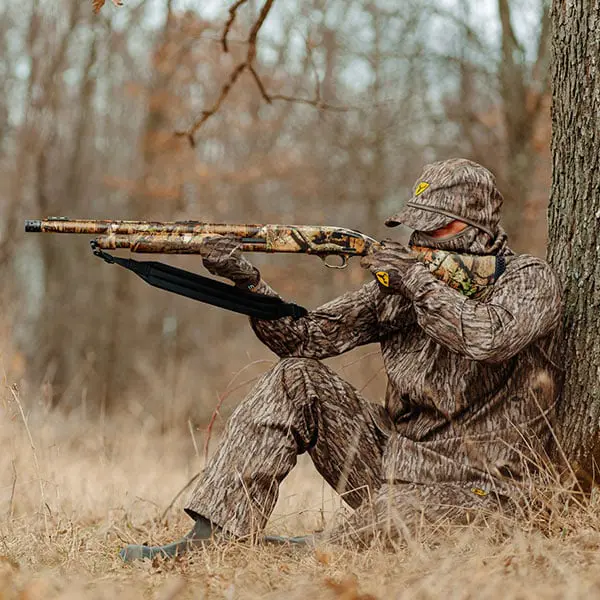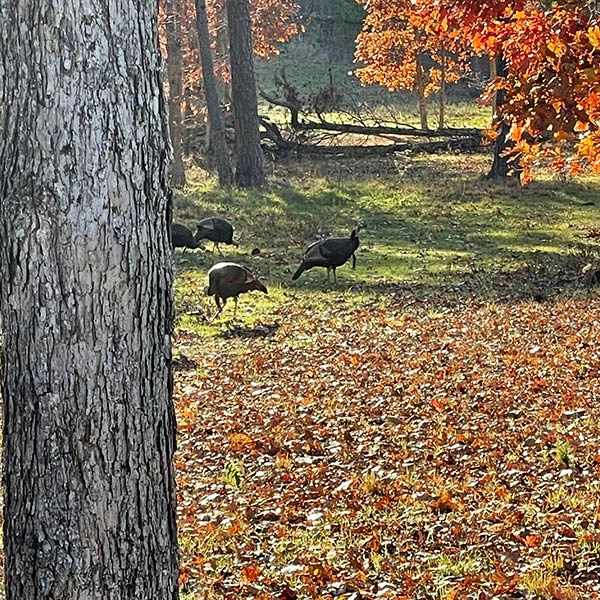
I remember accompanying my father on a cool fall morning in October on a turkey hunt. After making our way through a large, wooded area at daybreak, we could see the light of an open field ahead in the distance. We decided to continue walking until we reached the field, then we would set up and begin calling. However, a few yards before we reached the fence line of the field edge, we heard the yelping of turkeys still on the roost.
“They are close,” I whispered to my father. We decided to sit down in the spot we were standing to prevent being seen. After hurrying to put on our gloves and facemask, I used a mouth call to signal the nearby roosted birds. After seven to eight minutes of periodically yelping on my mouth call, we heard wings flapping as the turkeys flew off the roost. As the sound grew louder, I quickly realized they would land directly in front of us. When the lead gobbler hit the ground, my trigger finger squeezed the shot from my 12-gauge shotgun.
Not only was that one of the quickest turkey hunts I have ever experienced as a young teenager, but it was also my first turkey harvest. To make it even more special, my father witnessed the entire show, sitting against the same tree as me.
After harvesting my first gobbler that fall morning, God instilled a passion inside me for fall turkey hunting. Now, twenty-plus years later, I still enjoy hunting fall flocks of turkeys. With my experience of fall turkey hunting, I have learned that hunters should recognize three main factors before heading to the woods.
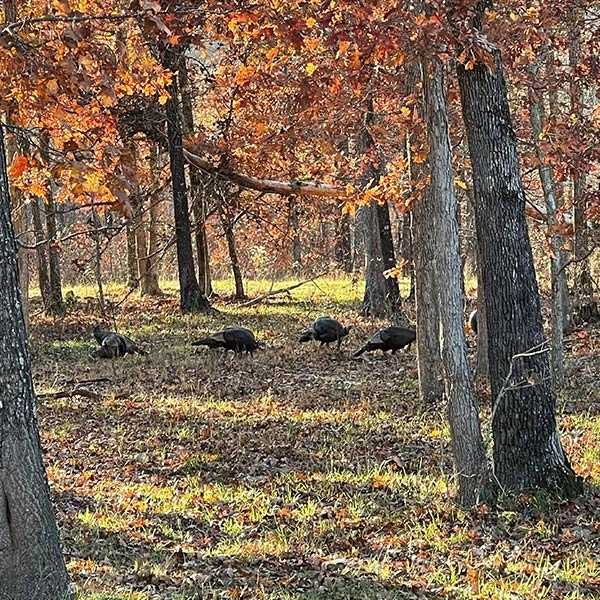
Where Are The Turkeys Located?
Unlike spring turkey hunting, toms do not gobble as often in the fall, making it challenging for the hunter to know the turkeys’ exact location each morning. But they – along with the hens – Can still be highly vocal. Hunters will hear yelping, clucking, and young turkeys kee-keeing while communicating. However, these softer sounds can make it difficult to locate the flock each morning.
Scouting is of the utmost importance for success when fall turkey hunting. Knowing where the turkeys roost, where they feed, and their daily travel routes can help determine the preferred method of hunting. When hunting fall turkeys, there are two main methods. One is patiently waiting in an area where turkeys often travel and waiting for them to appear. By scouting weeks before the season, a hunter can learn the travel routes that turkeys make daily, which is much more patternable than spring hunting. The second is the scatter method. The scatter method is when hunters find a flock of turkeys and run at the flock while yelling, screaming, and waving their arms to cause the flock to scatter in different directions. After 10 to 20 minutes, turkeys naturally began calling to each other to form back their flock. Hunters can use calls such as the hen assembly yelp, whistling, and the kee-kees made by younger turkeys to their advantage.
If the proper scouting has been done before the hunt, sportsmen can use the sit and wait method early mornings when turkeys come from the roost. As the day progresses, hunters should know where turkeys travel, giving them a better chance of finding a flock, then they can implement the scatter method.
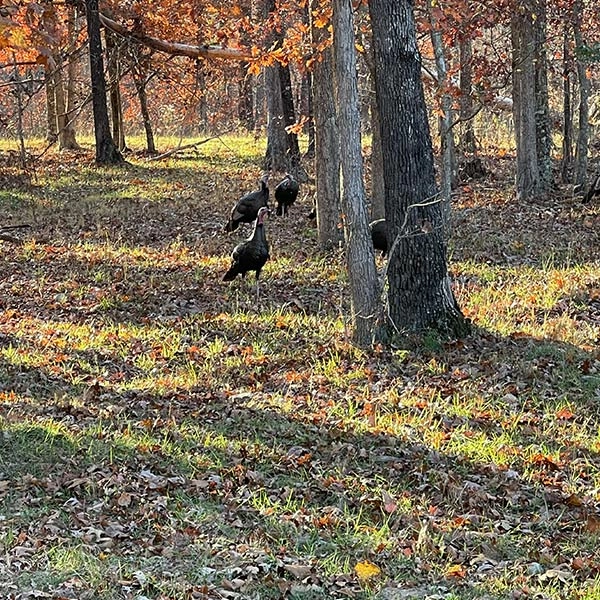
Hens or Gobblers?
In the fall, turkeys travel in flocks. Typically, the hens and younger poults will travel as a flock, while the toms and jakes travel in a separate flock. The hunter must know before the hunt what flock they will be pursuing. A plan beforehand on whether to hunt toms or hens will determine what types of calls and calling methods to use and gives the hunter an idea of how many turkeys should be harvested and if any hens should be taken.
In recent years, turkey populations have struggled in some regions of the United States. Understanding how many turkeys are in a specific hunting area and if there is an adequate number of hens can determine if harvests should consist of only toms or a mix of toms and hens.
When only pursuing toms, calling should consist of raspy yelps that are often made by toms and jakes. I prefer using the sit and wait method for tom hunts. I favor the scatter method when hunting areas where the population numbers are high enough to harvest a hen. Hens and their poults are more likely to respond to calls from the hunter. When a poult is separated from her mother, the mama hen makes the assembly yelp sound. The assembly yelp is a long streak of yelps, giving her poults more opportunity to find her location. The kee-kee is the sound a poult often makes because their vocal cords are not fully developed, resulting in their attempt at yelping being more high-pitched. Those two sounds can call turkeys into shooting range after scattering.
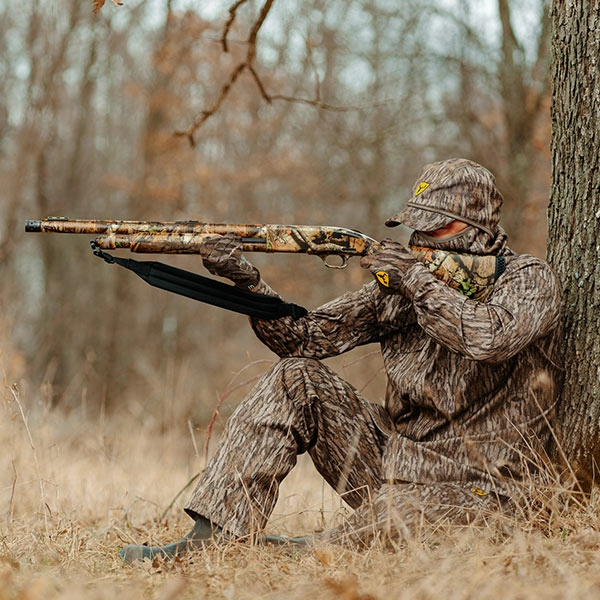
Shotgun or Bow?
Knowing which flock is to be hunted can also help determine where to set up. Another factor determining where to sit is whether to hunt with a shotgun or bow.
The mission of hunting with a shotgun or bow is the same; get turkeys into close range. When hunting with my bow, I prefer hunting in a blind while waiting on turkeys to pass naturally. When scattering turkeys, I elect to use a shotgun as moving through the timber quicker and getting set up swiftly is a more effortless undertaking with a shotgun.
When hunting with a bow or shotgun, getting into close range of wild turkeys requires the hunter to be concealed. I prefer wearing the same garments in the fall that I wear during the spring season. I wear the Blocker Outdoors Silentec in Mossy Oak Bottomland. My complete setup consists of a jacket, pants, gloves, and a facemask. The Silentec series keeps me comfortable, allows for movement when drawing my bow, and keeps me concealed, which is vital when attempting to get into close range.

